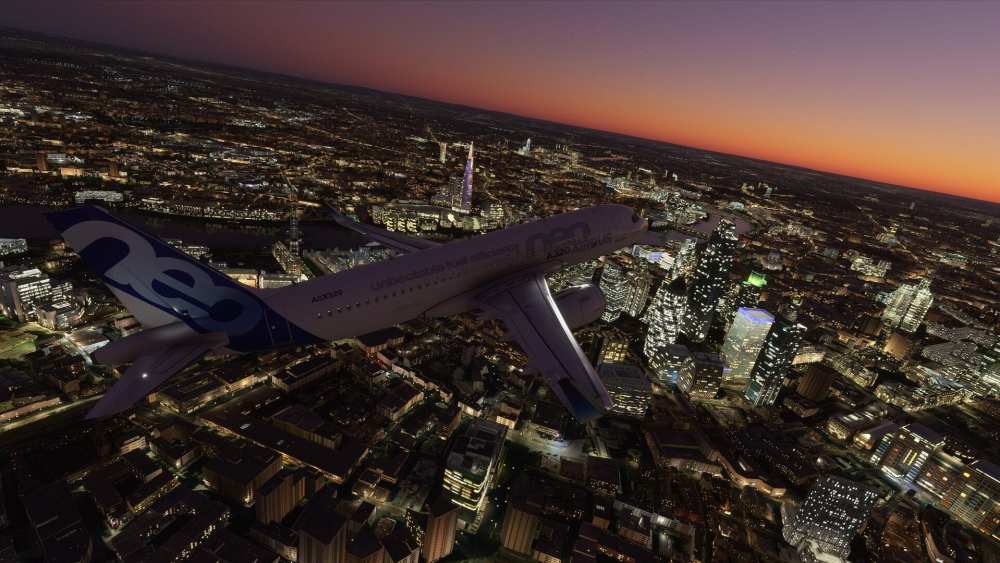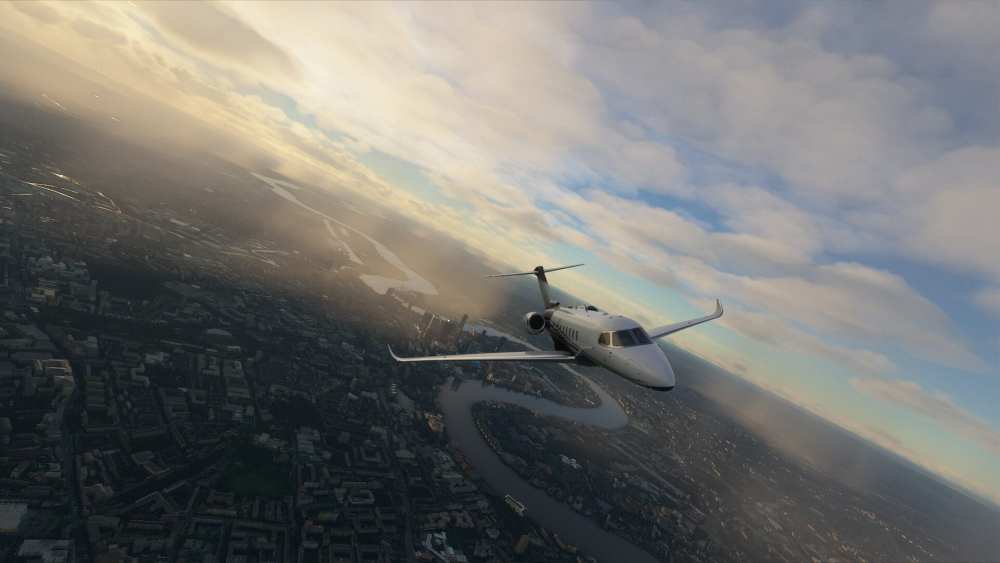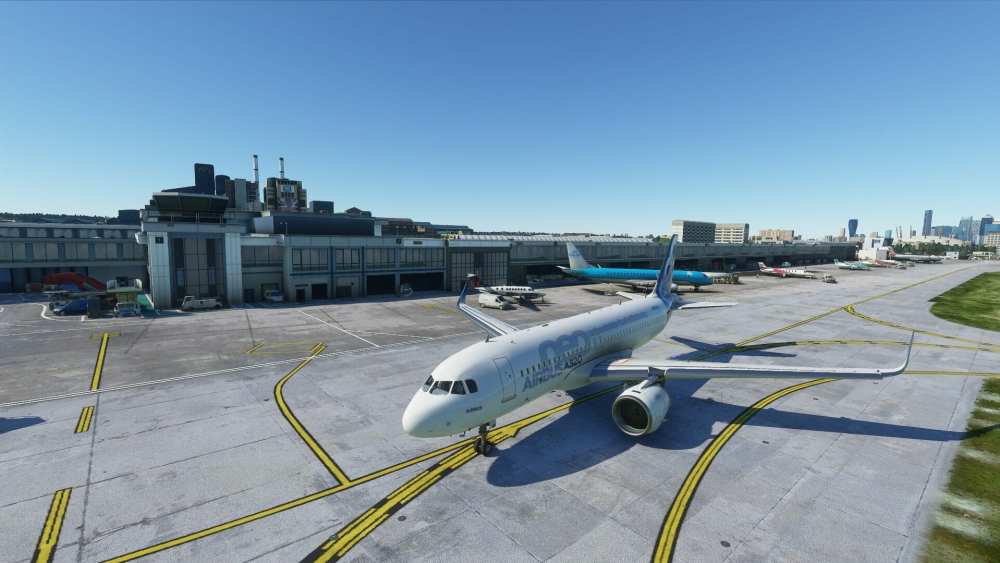Microsoft Flight Simulator aims to introduce many newcomers to the joys of the genre. A rather unique element among those is third-party add-ons.
For those who are not used to flight simulators (or similar genres like train simulators), third-party add-ons may simply look like DLC, but there are fundamental differences that you should be aware of.
As the name clearly implies, they’re not developed by Microsoft or Asobo Studio, but they are instead created by independent teams that range from fairly sizable to very small.
This means that the quality may vary (and this often doesn’t depend on the size of the team) and won’t always match that of the main simulator itself, in both directions.

Luckily, the built-in marketplace has a rating system, so you can reasonably assume that add-ons with a high rating from a lot of customers are quite good. Flight simulation enthusiasts are a rather demanding crowd in terms of quality.
Yet, there is another big caveat that you should keep in mind: while your usual DLCs have very finite development resources behind their creation (which usually matches what the developer can afford sparing after the release of a game), third-party add-ons can count on the development horsepower of tens of teams.
This means that while games from other genres usually get only a handful of DLC (unless they’re from select few publishers that are overly fond of costumes and similar goodies, and you likely know who I’m talking about), Microsoft Flight Simulator will probably get several hundreds of third-party add-ons over its lifetime between new aircraft, airports, scenery, and more.
Pricing can vary a lot, from 5-10 bucks all the way up to 70-100 for study aircraft, which are simulated with such a high level of complexity and realism that can easily be used for real training.

Many gamers are used to simply buying every DLC that is released for their favorite game, but unless you’re incredibly well-off (and you have absolutely massive storage space on your PC), this simply isn’t feasible with Flight Simulator’s add-ons.
Several were already available on day one for a total of roughly $100, and I can guarantee that by Christmas we’ll have many, many more of them available. I expect over a hundred by the end of the year, and the number is only going to grow as more and more developers start working on the game.
I’m sure you can imagine what trying to buy everything indiscriminately is going to do to your bank account. The money some spend on Star Citizen may very well start looking like peanuts in comparison, so here are a few pointers.
First of all, try to buy only what you know you’re going to use. There’s no need to grab just another aircraft (unless it’s a model you really love) if you haven’t mastered those you already have.

In terms of airports and scenery, try to select those you’re going to see a lot because you like to fly to, from, or above that specific location.
Buying a small airfield on a remote island that you’ll never actually visit might not be the best idea unless that location specifically interests you.
Fly to an add-on’s area and see what its default state is. Chances are that you may like it well enough that you may not need the add-on at all.
Do keep in mind that aircraft come with different levels of complexity. If you’re new to flight simulation, you probably should try not to bite more than you can chew.

Purchasing a $75 study aircraft can be extremely interesting if you actually want to learn all the smaller and ultra-complex systems that drive an airliner, but if the amount of switches and knobs in the cockpit of the default A320 Neo already intimidates you, you should probably wait until you have more familiarity with the basics.
The level of complexity of an aircraft is often proportional to its price, so that’s a decent indicator of what to expect.
Ultimately, remember that third-party developers have their own forums and social media (Facebook is very popular among flight simulator developers). You can read the comments left by other customers to get a decent idea of whether an add-on is good or right for you.
Basically, be selective and try to buy only what you’re reasonably sure will appeal to you. I guarantee that you don’t need all of the add-ons released for Microsoft Flight Simulator in order to enjoy it. It’s great out of the box, and a few hand-picked ones down the line can already greatly enhance your experience.

Also, do remember that Microsoft itself will release free “World Updates” in the future focusing on specific regions. This means that when you buy scenery, you should keep in mind that the same place may be improved for free in the future.
For example (and for the sake of full disclosure), the pictures you see in this post are from Orbx’s Landmark London City Park and London City Airport.
These are the only two add-ons I have purchased for now because I wasn’t very satisfied with the default look of London and I know I’m going to fly there a lot. On the other hand, the other add-ons available at the moment of this writing don’t portray locations I intend to visit often (and I guarantee I don’t need another Cessna, at least for now).
This isn’t an endorsement, because these add-ons are those that work for me personally (and I’m not entirely satisfied with the landmark package anyway, even if the developer promised to fix some visible quality issues), your mileage may vary and other packages may be better to improve your own Flight Simulator experience.

Please don’t get me wrong: I’m not here to say that third-party add-ons are bad. It’s quite the opposite. They have been a driving force for the hobby for decades and they have often improved massively games that weren’t all that special out of the box.
I can only imagine what third-party developers will be able to achieve with a simulator that is fantastic out of the box like Microsoft and Asobo’s new title. It’s a great time to be a flight simulator enthusiast and to move the first steps into the hobby as a newcomer.
Third-party developers are most of the time very passionate and hard-working members of the community who definitely deserve to be supported. This article doesn’t intend to turn you off from buying their add-ons in general, but simply to encourage you to be selective in your purchases, because the add-on addiction is real and potentially dangerous. I’ve been there.
If you want to learn more about Microsoft Flight Simulator, you can check out our review that will tell you everything you need to know about Asobo Studio’s new and groundbreaking game.
Microsoft Flight Simulator is already available for Windows 10 and Steam. An Xbox version is also planned for the future but has no release date for now.
You can also check out our growing guide wiki that includes more information that can help you get started.
The post Should You Buy Microsoft Flight Simulator’s Third-Party Add-Ons? appeared first on Twinfinite.
